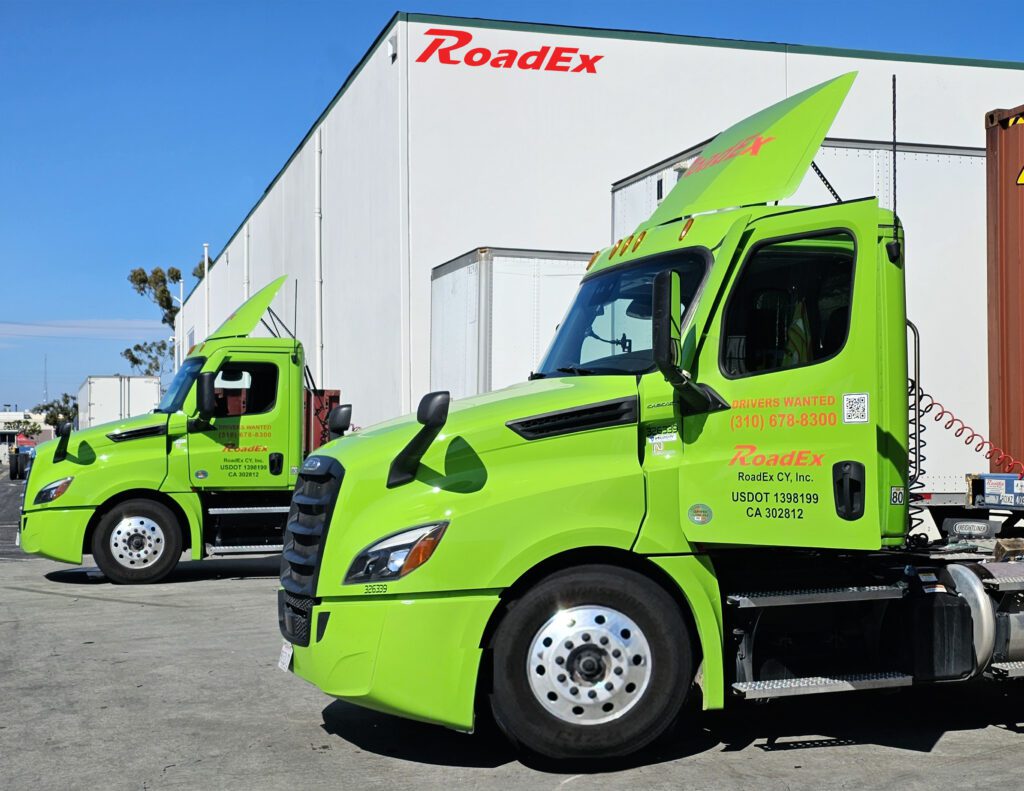As ecommerce orders increase shipping activity at U.S. ports, RoadEx America is relying on new web-based technology systems to more quickly fetch containers arriving at the busy ports of Los Angeles and Long Beach.
RoadEx then delivers them to retailers looking to quickly get trendy furniture and merchandise into showrooms and store shelves or to consumers’ doorsteps. RoadEx is a trucking and logistics services company.
Lisa Wan, executive vice president, RoadEx America
“A lot of ecommerce customers are looking for containers delivered more quickly to their warehouses for a faster turnaround. They need to empty them and have cargoes they ship to their stores or direct to consumers,” says Lisa Wan, executive vice president of operations, RoadEx America.
RoadEx has been expediting its container pick-up and delivery service with new web-based software. The software lets it know when its clients’ incoming containers will be available for pick-up at a port terminal. It also uses complementary drayage-management software to route its container-carrying trucks. The software does so in a way that puts them at that terminal at the scheduled pick-up time, Wan says.
The web-based drayOS drayage management system, from PortPro, also lets RoadEx optimize the routing of its container trucks. In addition, drayOS offers an online portal for customers to check the expected delivery time of their containers and access shipping invoices.
Providing the Uber experience in shipping
“Nowadays, our customers are expecting more visibility to the point of comparing it to Uber,” where they can see who their driver is, what vehicle they’re in, and when they’ll arrive, Wan says.
That expectation is likely to only increase as ecommerce accounts for more container shipping, she and others say.
Ecommerce orders of products ranging from electronics and food to cars and chemicals is driving up business at U.S. ports. It’s sparking demand for “port-to-door” transportation-management systems, according to a new report, 2023 State of Drayage.
The U.S. drayage market — transporting goods from container ships to distribution centers, retailers and end customers — is on course to grow. It’ll go from $6.1 billion last year to $8.3 billion by 2027, according to figures the report cites from market research firm Technavio. Globally, the drayage services market will grow from about $25.2 billion last year to more than $28.2 billion in 2027.
Michael Mecca, CEO, PortPro
Michael Mecca, CEO and founder of PortPro, says that as companies source products through global supply chains and ship them to customers, they face the challenge of getting shipment visibility and status and sharing it with their trading partners.
“This lack of visibility leads to costly headaches like containers and equipment being double-handled, and drivers stuck waiting in line at marine terminals,” the report says. “It also causes a whole host of operational inefficiencies that ripple across the enterprise for drayage carriers.”
A spokeswoman says that PortPro produced the report based on information derived from logistics services companies and research firms. PortPro provides transportation-management software for drayage trucking companies.
RoadEx uses PortPro technology to fill a void
Mecca says web-based digital drayage management systems, such as PortPro’s drayOS, help fill a void of shipment visibility between ports and final destinations.
Mecca notes that PortPro is on course to double its revenue this year after tripling last year. He founded it in 2019. PortPro raised $12 million in funding late last year from Avenue Growth Partners. And it’s using the funds to continue developing its software for managing drayage operations.
At RoadEx, Wan says she expects to rely on drayage-management systems even more in the years ahead. She notes that the systems will be crucial to deal with market disruptions. For example, the COVID-19 pandemic caused severe back-ups at port facilities. And with systems that help container carriers expedite deliveries and provide arrival times, retailers and other shippers may forego air freight for less costly if far slower ocean container routes, she adds.
PortPro primarily works with trucking companies in the United States and Canada. But recently, it expanded into Europe, offering its software to drayage firms serving Rotterdam, Netherlands.
“Rotterdam to New Jersey is a really common shipping lane now,” Mecca says. He adds, “We’re working on moving into more continents, more countries.”
Paul Demery is a Digital Commerce 360 contributing editor covering B2B digital commerce technology and strategy. paul@digitalcommerce360.com.
Sign up
Sign up for a complimentary subscription to Digital Commerce 360 B2B News, published 4x/week. It covers technology and business trends in the growing B2B ecommerce industry. Contact Mark Brohan, senior vice president of B2B and Market Research, at mark@digitalcommerce360.com. Follow him on Twitter @markbrohan. Follow us on LinkedIn and be the first to know when we publish Digital Commerce 360 B2B News content.
Favorite